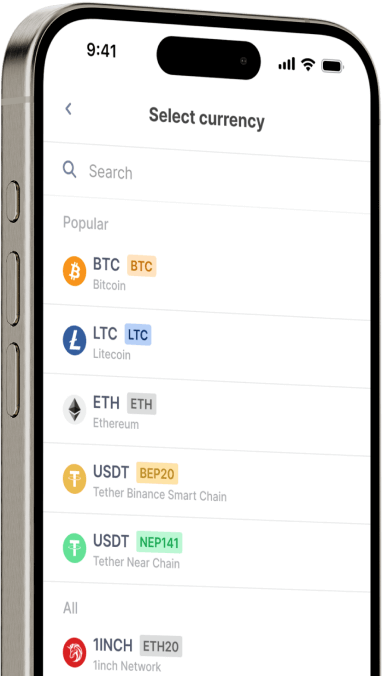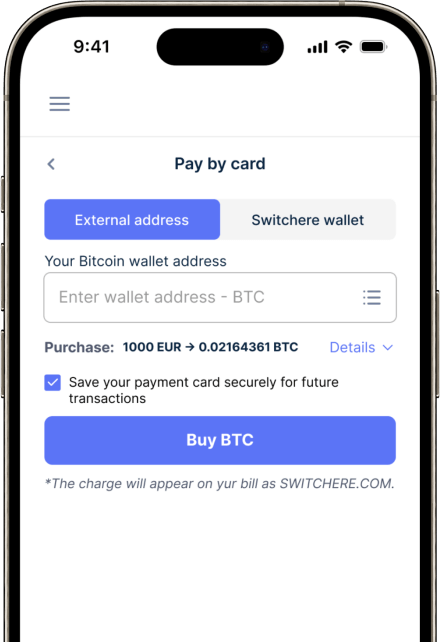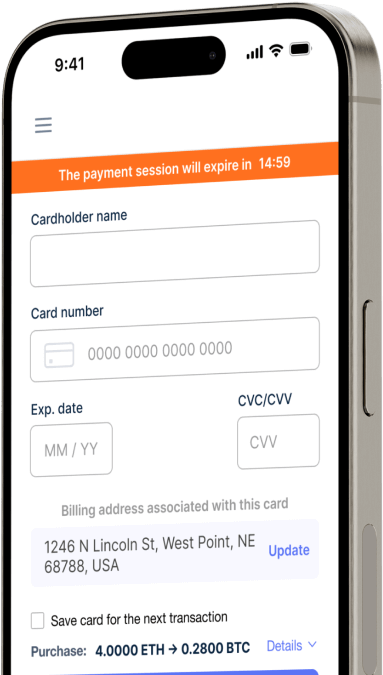Konwertuj
Canadian Dollar (CAD) na SHIBA INU (SHIB) natychmiast
Kupuj SHIBA INU (SHIB) z Canadian Dollar (CAD) łatwo w Switchere i korzystaj z szybkich, bezpiecznych transakcji.
O
SHIBA INU (SHIB)
Shiba Inu (SHIB) powstał jako token ERC-20 na blockchainie Ethereum, słynnie uruchomiony jako "eksperyment w zdecentralizowanym spontanicznym budowaniu społeczności" i szybko zyskujący popularność w kategorii memów cyfrowych. Podczas gdy jego początkowa atrakcyjność była silnie ukierunkowana na społeczność i kulturę, projekt od tego czasu zaczął rozwijać szerszy ekosystem, aby rozszerzyć swoją użyteczność poza swoje początki. Ekosystem ten, często określany jako ekosystem Shiba Inu, obejmuje kluczowe komponenty zaprojektowane w celu zwiększenia funkcjonalności i przyjęcia SHIB i powiązanych z nim tokenów w zdecentralizowanej sieci.
Rdzeniem jego ewolucji technicznej jest ShibaSwap, zastrzeżona zdecentralizowana giełda (DEX), która ułatwia wymianę tokenów, stakowanie i zapewnianie płynności dla SHIB, BONE (token zarządzania) i LEASH. Znaczącym osiągnięciem jest Shibarium, rozwiązanie skalowania warstwy 2 zbudowane na Ethereum, mające na celu zapewnienie szybszych prędkości transakcji i niższych opłat za gaz dla aplikacji w ekosystemie SHIB, mające na celu poprawę infrastruktury Web3. Sam token SHIB jest używany do płatności i może być stakowany w celu zdobycia nagród. Tokenomika projektu ma na celu wspieranie tej rozwijającej się użyteczności, przy czym BONE odgrywa również kluczową rolę jako token gazowy dla operacji Shibarium. SHIB reprezentuje ciągłe wysiłki zmierzające do przekształcenia popularnej monety memowej w bardziej solidną platformę z różnorodnymi aplikacjami DeFi i potencjalnymi integracjami NFT, wyrzeźbiając swoją niszę w konkurencyjnej przestrzeni technologii blockchain.
Kup ponad 150 innych kryptowalut za Canadian Dollar (CAD)
Inne monety za Canadian Dollar (CAD)
-
CAD do ZRX
-
CAD do 1INCH
-
CAD do AAVE
-
CAD do ACH
-
CAD do ALGO
-
CAD do TLM
-
CAD do ANKR
-
CAD do APE
-
CAD do NFT
-
CAD do API3
-
CAD do APT
-
CAD do ARPA
-
CAD do AUDIO
-
CAD do AVAX
-
CAD do AVAX
-
CAD do AXS
-
CAD do BADGER
-
CAD do BAL
-
CAD do BNT
-
CAD do BAT
-
CAD do BNB
-
CAD do BSW
-
CAD do BSV
-
CAD do BLUR
-
CAD do BONE
-
CAD do CTSI
-
CAD do CELR
-
CAD do CELO
-
CAD do CEL
-
CAD do LINK
-
CAD do CHZ
-
CAD do CHR
-
CAD do C98
-
CAD do COMP
-
CAD do CFX
-
CAD do PEOPLE
-
CAD do CVX
-
CAD do ATOM
-
CAD do CTC
-
CAD do CRV
-
CAD do DAI
-
CAD do DASH
-
CAD do MANA
-
CAD do DENT
-
CAD do DGB
-
CAD do DYDX
-
CAD do XEC
-
CAD do EOS
-
CAD do ETC
-
CAD do ENS
-
CAD do ETHW
-
CAD do FET
-
CAD do FIL
-
CAD do FLOKI
-
CAD do GALA
-
CAD do GNO
-
CAD do ONE
-
CAD do HBAR
-
CAD do HOT
-
CAD do HOOK
-
CAD do ICX
-
CAD do ILV
-
CAD do IMX
-
CAD do INJ
-
CAD do ICP
-
CAD do IOST
-
CAD do IOTX
-
CAD do JASMY
-
CAD do JST
-
CAD do KAVA
-
CAD do KCS
-
CAD do KSM
-
CAD do KNC
-
CAD do LDO
-
CAD do LQTY
-
CAD do LPT
-
CAD do LOOKS
-
CAD do LRC
-
CAD do LUNA
-
CAD do MKR
-
CAD do MASK
-
CAD do EGLD
-
CAD do ALICE
-
CAD do NEAR
-
CAD do XEM
-
CAD do NEXO
-
CAD do NOT
-
CAD do NMR
-
CAD do OKB
-
CAD do OMG
-
CAD do ONT
-
CAD do EDU
-
CAD do OP
-
CAD do OGN
-
CAD do CAKE
-
CAD do PAXG
-
CAD do PENDLE
-
CAD do DOT
-
CAD do POL
-
CAD do QTUM
-
CAD do QNT
-
CAD do RDNT
-
CAD do XRD
-
CAD do RVN
-
CAD do REN
-
CAD do RSR
-
CAD do RLC
-
CAD do RPL
-
CAD do SFP
-
CAD do SHIB
-
CAD do SKL
-
CAD do SXP
-
CAD do STND
-
CAD do STG
-
CAD do XLM
-
CAD do GMT
-
CAD do STORJ
-
CAD do STMX
-
CAD do SUSHI
-
CAD do SNX
-
CAD do USDT (Polygon)
-
CAD do USDT (AVAC)
-
CAD do USDT (BEP20)
-
CAD do USDT (ERC20)
-
CAD do USDT (SPL)
-
CAD do USDT (NEP141)
-
CAD do USDT (FA2)
-
CAD do USDT (TRC20)
-
CAD do USDT (JETTON)
-
CAD do XTZ
-
CAD do GRT
-
CAD do SAND
-
CAD do TFUEL
-
CAD do THETA
-
CAD do RUNE
-
CAD do TON
-
CAD do TUSD (BEP20)
-
CAD do TUSD (TRC20)
-
CAD do TWT
-
CAD do UOS
-
CAD do UMA
-
CAD do UNI
-
CAD do USDC (Polygon)
-
CAD do USDC (SPL)
-
CAD do USDC (OP)
-
CAD do USDC (BEP20)
-
CAD do USDC (AVAC)
-
CAD do USDC (ARB)
-
CAD do USDC (ERC20)
-
CAD do VET
-
CAD do VRA
-
CAD do WAXP
-
CAD do WOO
-
CAD do WLD
-
CAD do WBTC
-
CAD do WMINIMA
-
CAD do XDC
-
CAD do YFI
-
CAD do YGG
-
CAD do ZIL
Jak kupić SHIBA INU (SHIB)
Często zadawane pytania
-
Co się dzieje, gdy wymieniam dolary kanadyjskie (CAD) na tokeny Shiba Inu (SHIB)?
Handel CAD za SHIB obejmuje konwersję waluty fiducjarnej (dolary kanadyjskie) na cyfrowe aktywa Shiba Inu, token ERC-20, zazwyczaj za pośrednictwem giełdy kryptowalut, która obsługuje tę parę. Proces ten zazwyczaj wymaga weryfikacji konta (zgodność z KYC/AML) i pozwala na uczestnictwo w ekosystemie SHIB, znanym z projektów prowadzonych przez społeczność i zdecentralizowanej giełdy ShibaSwap.
-
Czy podczas konwersji CAD na SHIB istnieją szczególne względy dotyczące opłat transakcyjnych lub czasu przetwarzania?
Tak, podczas konwersji CAD na SHIB należy wziąć pod uwagę opłaty za depozyt giełdowy w dolarach kanadyjskich, opłaty transakcyjne na platformie oraz opłaty za gaz sieciowy Ethereum w przypadku wypłaty SHIB (token ERC-20) do zewnętrznego portfela. Szybkość wpłat CAD może się różnić (e-Transfer Interac jest zwykle szybki), podczas gdy zakupy SHIB są niemal natychmiastowe w księdze zamówień giełdy. Czasy transakcji blockchain dla wypłat zależą od przeciążenia sieci Ethereum.
-
Jakie środki bezpieczeństwa powinienem traktować priorytetowo podczas obsługi transakcji CAD na SHIB i przechowywania tokenów SHIB?
Priorytetem jest korzystanie z renomowanych, zarejestrowanych w FINTRAC giełd kryptowalut dla transakcji CAD na SHIB. Włącz uwierzytelnianie dwuskładnikowe (2FA) na swoim koncie wymiany w celu bezpiecznego handlu. W celu długoterminowego przechowywania tokenów SHIB, rozważ przeniesienie ich z giełdy do bezpiecznego portfela cyfrowego, który kontrolujesz, najlepiej portfela sprzętowego, aby zabezpieczyć swoje klucze prywatne. Zachowaj czujność wobec prób phishingu powszechnych w przestrzeni meme coin.
-
Które platformy są powszechnie używane w Kanadzie do zakupu SHIB za CAD i jakie metody płatności są akceptowane?
Kanadyjczycy często korzystają z regulowanych przez FINTRAC giełd kryptowalut, które wymieniają SHIB, aby kupić go za CAD. Powszechne metody płatności dla tego fiat on-ramp obejmują e-transfer Interac, przelewy bankowe, a czasami zakupy kartą kredytową/debetową, chociaż wydawcy kart mogą mieć ograniczenia. Platformy te ułatwiają nabywanie tokenów SHIB do portfela cyfrowego.
-
Jakie są korzyści z nabywania tokenów SHIB bezpośrednio za dolary kanadyjskie?
Nabycie SHIB bezpośrednio za pomocą CAD oferuje prostą bramę fiducjarną do ekosystemu Shiba Inu, omijając potrzebę pośredniej konwersji kryptowalut. Umożliwia to bezpośredni udział w ShibaSwap, potencjalny dostęp do tokenów ekosystemu, takich jak BONE lub LEASH, oraz zaangażowanie w projekty NFT SHIB lub rozwiązanie skalowania warstwy 2, Shibarium, przy użyciu lokalnej waluty do zakupu aktywów cyfrowych.
-
Jak płynność pary CAD/SHIB wpływa na handel i jaką rolę w transakcjach odgrywa charakter ERC-20 SHIB?
Płynność pary CAD/SHIB na kanadyjskich giełdach wpływa na łatwość realizacji transakcji bez znacznego poślizgu cenowego; wyższy wolumen obrotu oznacza zazwyczaj lepszą głębokość księgi zleceń. Jako token ERC-20, transfery i interakcje SHIB z platformami takimi jak ShibaSwap odbywają się w łańcuchu blokowym Ethereum, co oznacza, że finalizacja transakcji w łańcuchu blokowym i powiązane opłaty za gaz zależą od warunków sieci Ethereum i jej bieżącego obciążenia.




